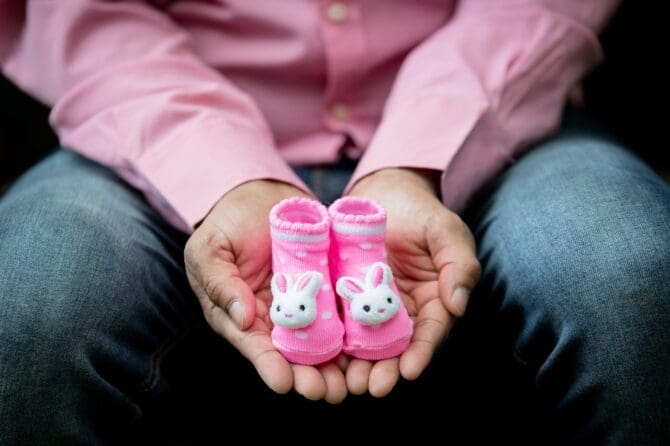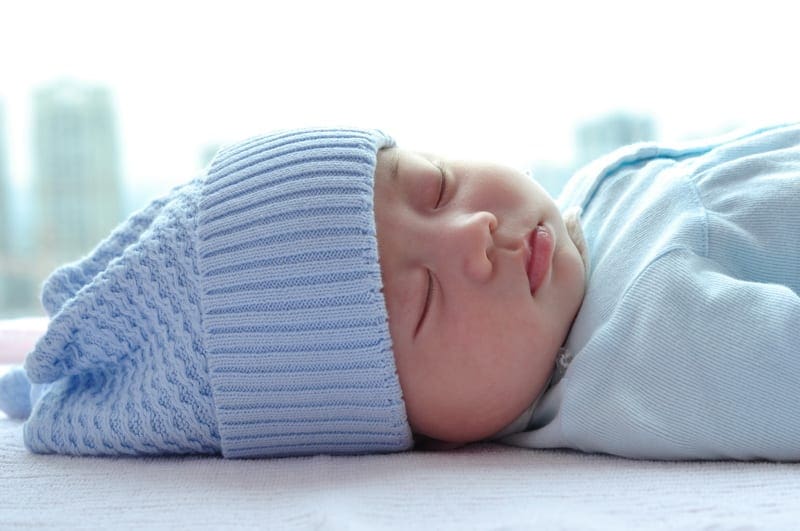Learn effective methods to alleviate back pain during pregnancy and improve your comfort. These tips will help you find relief and enjoy a more comfortable pregnancy journey.
1. Proper Posture
Maintaining good posture is essential for reducing strain on your back muscles during pregnancy. By learning the correct sitting, standing, and sleeping positions, you can effectively support your spine and alleviate backaches.
When sitting, remember to keep your back straight and well-supported. Use a chair with proper lumbar support or place a cushion behind your lower back. Avoid crossing your legs and try to keep your feet flat on the floor.
While standing, distribute your weight evenly on both feet and avoid slouching. Engage your core muscles and imagine a string pulling you up from the top of your head, lengthening your spine. Consider using a footrest to relieve pressure on your lower back.
When it comes to sleeping, choose a mattress that provides adequate support for your spine. Consider using a pregnancy pillow to maintain proper alignment of your hips, spine, and shoulders. Sleeping on your side with a pillow between your knees can also help alleviate backaches.
By maintaining proper posture throughout your pregnancy, you can reduce strain on your back muscles and enjoy a more comfortable journey.
2. Exercise and Stretching
During pregnancy, engaging in gentle exercises and stretches that specifically target the back muscles can be highly beneficial for relieving pregnancy-related backaches. By strengthening your core and improving flexibility, you can effectively alleviate the discomfort and pain associated with backaches.
Regular exercise not only helps to maintain overall fitness but also plays a crucial role in supporting your spine and reducing strain on your back muscles. It is important, however, to choose exercises that are safe and suitable for pregnancy.
A combination of cardiovascular exercises, such as walking or swimming, and targeted back exercises can help alleviate backaches. Gentle stretches that focus on the back muscles can also provide relief. It is essential to listen to your body and avoid any exercises or stretches that cause discomfort or pain.
- Some effective exercises and stretches for targeting the back muscles during pregnancy include:
| Prenatal Yoga: | Practicing prenatal yoga can be highly beneficial for relieving backaches during pregnancy. Prenatal yoga not only improves posture but also strengthens the muscles and promotes relaxation. It involves specific poses that target back pain and incorporates proper breathing techniques to enhance the benefits. |
| Cat-Cow Pose: | The cat-cow pose is a gentle stretch that promotes flexibility and relieves tension in the back and spine. By moving between the cat and cow positions, you can effectively stretch and release the muscles in your back, providing relief from pregnancy-related backaches. |
| Child’s Pose: | Practicing the child’s pose can help release tension in the lower back and promote relaxation. This gentle stretch allows your back muscles to relax and can provide relief from pregnancy backaches. |
| Pelvic Tilts: | Pelvic tilts are an exercise that helps strengthen the core and stabilize the pelvic area. By gently tilting the pelvis forward and backward, you can engage the muscles in your lower back and provide support to your spine, reducing pregnancy-related backaches. |
Remember to consult with your healthcare provider or a qualified prenatal fitness instructor before starting any exercise or stretching routine during pregnancy. They can provide guidance on the most suitable exercises for your specific needs and ensure your safety and the well-being of your baby.
2.1 Prenatal Yoga
Discover the benefits of prenatal yoga, which can improve posture, strengthen muscles, and promote relaxation. Prenatal yoga is a gentle form of exercise that is specifically designed for pregnant women. It offers numerous benefits for both the body and mind during pregnancy.
One of the key advantages of prenatal yoga is its ability to improve posture. As your baby grows, your center of gravity shifts, which can put strain on your back. Prenatal yoga helps you become more aware of your posture and teaches you how to align your body properly. By maintaining good posture, you can reduce the strain on your back muscles and alleviate backaches.
In addition to improving posture, prenatal yoga also helps strengthen the muscles in your body. The gentle movements and poses in prenatal yoga target the back muscles, core muscles, and pelvic floor muscles. Strengthening these muscles can provide support for your growing belly and help alleviate back pain.
Prenatal yoga is also known for its ability to promote relaxation. The practice incorporates deep breathing techniques and mindfulness exercises, which can help reduce stress and anxiety. By practicing prenatal yoga regularly, you can create a sense of calm and relaxation in your body and mind, which can contribute to a more comfortable pregnancy journey.
During prenatal yoga classes, you will have the opportunity to explore specific poses that target back pain. These poses are designed to stretch and strengthen the muscles in your back, providing relief from pregnancy-related backaches. Your instructor will guide you through each pose, ensuring that you are using proper form and alignment.
In addition to poses, prenatal yoga also focuses on proper breathing techniques. Learning how to breathe deeply and effectively can help you manage discomfort and stay relaxed during pregnancy. Your instructor will teach you different breathing exercises that you can use both during yoga practice and in your daily life.
Overall, prenatal yoga is a wonderful way to take care of your body and mind during pregnancy. It offers a range of benefits, including improved posture, strengthened muscles, and relaxation. By exploring specific poses that target back pain and learning proper breathing techniques, you can find relief from pregnancy-related backaches and enjoy a more comfortable pregnancy journey.
2.1.1 Cat-Cow Pose
The cat-cow pose is a gentle stretch that can promote flexibility and relieve tension in the back and spine. It is a simple yet effective yoga pose that can provide relief from pregnancy-related backaches. To perform the cat-cow pose, follow these steps:
- Start on all fours, with your hands directly under your shoulders and your knees under your hips.
- As you inhale, arch your back and lift your head up, allowing your belly to sink towards the floor. This is the cow pose.
- As you exhale, round your back and tuck your chin towards your chest, like a cat stretching. This is the cat pose.
- Continue flowing between the cow and cat poses, coordinating your breath with the movements. Inhale as you move into the cow pose, and exhale as you move into the cat pose.
- Repeat this sequence for several breaths, focusing on the gentle stretching sensation in your back and spine.
The cat-cow pose can help release tension in the back muscles, improve spinal flexibility, and promote relaxation. It also helps to increase blood flow to the spine, which can alleviate discomfort and reduce pregnancy-related backaches. Remember to listen to your body and only move within a comfortable range of motion. If you experience any pain or discomfort, modify the pose or consult with a prenatal yoga instructor for guidance.
2.1.2 Child’s Pose
Practice the child’s pose to release tension in the lower back and promote relaxation. This gentle stretch can provide relief from pregnancy backaches.
2.2 Pelvic Tilts
Discover the benefits of pelvic tilts, an exercise that helps strengthen the core and stabilize the pelvic area. During pregnancy, the pelvic region undergoes significant changes to accommodate the growing baby, which can lead to discomfort and strain on the back. Pelvic tilts are a safe and effective way to alleviate these issues and promote overall well-being.
Pelvic tilts involve gently rocking the pelvis back and forth while lying on your back with bent knees. This movement helps engage and strengthen the muscles in the lower back, abdomen, and pelvic floor. By practicing pelvic tilts regularly, you can improve core stability, reduce back pain, and enhance overall posture.
To perform pelvic tilts safely during pregnancy, follow these steps:
- Start by lying on your back with your knees bent and feet flat on the floor.
- Place your hands on your hips or alongside your body for support.
- Slowly tilt your pelvis forward, pressing your lower back gently against the floor.
- Hold this position for a few seconds, focusing on engaging your abdominal muscles.
- Next, tilt your pelvis backward, arching your lower back slightly off the floor.
- Again, hold this position for a few seconds before returning to the starting position.
- Repeat this movement for several repetitions, gradually increasing the duration as your muscles become stronger.
Remember to breathe deeply and maintain a relaxed state throughout the exercise. If you experience any discomfort or pain, stop immediately and consult with your healthcare provider.
By incorporating pelvic tilts into your pregnancy exercise routine, you can help alleviate backaches, improve core strength, and promote better pelvic stability. Consult with a prenatal fitness expert or a healthcare professional for personalized guidance and modifications based on your individual needs and stage of pregnancy.
3. Supportive Footwear
Investing in comfortable and supportive footwear is crucial for reducing strain on your back during pregnancy. Opting for shoes that provide proper arch support and cushioning can significantly alleviate pregnancy-related backaches. Here are some tips to help you choose the right footwear:
- Look for shoes with a low heel or no heel at all. High heels can throw off your balance and put additional stress on your back.
- Ensure that the shoes have adequate arch support. This helps maintain the natural alignment of your feet and reduces the strain on your back.
- Choose shoes with cushioning in the insole to absorb shock and provide extra comfort.
- Consider getting shoes with adjustable straps or laces. This allows you to customize the fit and provide additional support as needed.
- Try on different pairs of shoes and walk around to assess their comfort and stability. Remember, comfort should be your top priority.
By investing in supportive footwear, you can minimize the impact on your back and make your pregnancy journey more comfortable. Don’t underestimate the power of proper shoes in alleviating backaches during this special time.
3.1 Orthotic Inserts
When it comes to relieving pregnancy-related backaches, one effective solution that you should consider is using orthotic inserts. These inserts are designed to provide additional support and cushioning for your feet, which can have a positive impact on your overall comfort and well-being.
One of the main benefits of orthotic inserts is their ability to distribute weight evenly across your feet. During pregnancy, the additional weight can put strain on your back, leading to discomfort and pain. By using orthotic inserts, you can help alleviate this strain by ensuring that your weight is evenly distributed, reducing the pressure on your back muscles.
Furthermore, orthotic inserts can also help reduce back pain by providing cushioning and support to your feet. During pregnancy, your body goes through various changes, including changes in your posture and the way you walk. This can put additional stress on your feet, which can then affect your back. Orthotic inserts can help absorb shock and provide the necessary support to keep your feet in a proper position, reducing the impact on your back.
When considering orthotic inserts, it’s important to choose the right type for your specific needs. There are various options available, including inserts that provide arch support, heel cups, and full-length inserts. It’s recommended to consult with a healthcare professional or a specialist in orthotics to determine the best option for you.
In conclusion, if you’re experiencing pregnancy-related backaches, incorporating orthotic inserts into your footwear routine can be a game-changer. These inserts can provide additional support and cushioning for your feet, helping to distribute weight evenly and reduce back pain. Remember to choose the right type of orthotic inserts for your needs and consult with a professional if necessary.
4. Heat and Cold Therapy
Heat and cold therapy can be highly effective in relieving backaches during pregnancy. By applying heat or cold to the affected area, you can reduce inflammation, relax muscles, and alleviate pain. However, it’s important to know when to use heat packs or cold compresses and how long to apply them for maximum relief.
Heat Therapy:
Heat therapy is beneficial for soothing muscle tension and increasing blood flow to the affected area. It can be particularly helpful for relieving backaches caused by muscle strain or tightness. To apply heat therapy, you can use a heating pad, warm towel, or hot water bottle. Make sure to wrap the heat source in a cloth to protect your skin and prevent burns. Apply the heat for around 15-20 minutes at a time, and repeat as needed throughout the day.
Cold Therapy:
Cold therapy is effective in reducing inflammation and numbing the area, which can provide relief from backaches caused by swelling or acute pain. You can use a cold pack, ice pack, or even a bag of frozen vegetables wrapped in a cloth. Apply the cold therapy for about 10-15 minutes at a time, and make sure to have a barrier between the cold source and your skin to prevent frostbite or discomfort. Repeat the application as necessary, but avoid prolonged exposure to cold.
When to Use Heat or Cold:
Deciding whether to use heat or cold therapy depends on the nature of your backache. If you have acute pain or swelling, cold therapy is usually more effective. On the other hand, if your backache is caused by muscle tension or tightness, heat therapy can provide better relief. It’s important to listen to your body and choose the therapy that feels most soothing and comfortable for you.
Precautions:
While heat and cold therapy can be beneficial, it’s important to use them safely and avoid any potential risks. Here are some precautions to keep in mind:
- Avoid applying heat or cold directly to your skin. Always use a cloth or towel as a barrier to protect your skin.
- Do not use heat therapy if you have an open wound, rash, or any skin condition that could be aggravated by heat.
- If you have reduced sensation or circulation in the affected area, consult with your healthcare provider before using heat or cold therapy.
- Do not apply cold therapy for an extended period of time, as it can cause tissue damage.
- If you have any concerns or uncertainties about using heat or cold therapy during pregnancy, consult with your healthcare provider for personalized advice.
By incorporating heat and cold therapy into your routine, you can effectively manage and relieve pregnancy-related backaches. Remember to listen to your body, use the therapy that works best for you, and always prioritize safety and comfort.
4.1 Warm Baths
Enjoy a warm bath to relax your muscles and reduce pregnancy-related back pain. Adding Epsom salts or essential oils can enhance the soothing effect.
During pregnancy, a warm bath can be a blissful way to relieve muscle tension and ease backaches. The warm water helps to relax your muscles, providing much-needed relief from the discomfort that often accompanies pregnancy. By immersing yourself in a warm bath, you can experience a sense of relaxation and calmness that can alleviate the strain on your back.
To enhance the soothing effect of a warm bath, consider adding Epsom salts or essential oils. Epsom salts contain magnesium sulfate, which can help relax muscles and reduce inflammation. Simply dissolve a cup of Epsom salts in your bathwater and soak in the warm water for about 20 minutes. The salts will dissolve and release magnesium ions, which can be absorbed through your skin, providing additional relief for your backaches.
Alternatively, you can add a few drops of essential oils to your bathwater. Lavender oil, for example, is known for its calming properties and can help promote relaxation. Other essential oils such as chamomile, peppermint, or eucalyptus can also be beneficial in reducing muscle tension and soothing back pain. Remember to use only a few drops of essential oil, as they are highly concentrated.
As you immerse yourself in the warm water, take the time to relax and unwind. Let the warm bath envelop you, allowing the tension in your muscles to melt away. Close your eyes, take deep breaths, and let the soothing sensations wash over you. You may even consider playing soft music or lighting candles to create a serene atmosphere.
In addition to providing relief for your backaches, a warm bath can also offer other benefits during pregnancy. It can help improve blood circulation, reduce swelling in your legs and feet, and promote better sleep. So, take the time to indulge in a warm bath and pamper yourself during this special time.
5. Prenatal Massage
Experience the benefits of prenatal massage, which can help relieve tension in your muscles and reduce pregnancy-related backaches. Prenatal massage is a safe and effective way to alleviate discomfort and promote relaxation during pregnancy. It involves the use of gentle techniques and specialized positioning to accommodate the changing needs of your body.
During pregnancy, your body undergoes numerous changes that can lead to backaches and muscle tension. Prenatal massage focuses on addressing these specific areas of discomfort, providing relief and improving overall well-being.
A qualified massage therapist who specializes in prenatal care will have the knowledge and expertise to ensure a safe and comfortable experience. They will be familiar with the unique needs and considerations of pregnant women, such as avoiding certain pressure points and using appropriate techniques.
When seeking a prenatal massage therapist, it is important to choose someone who is certified and experienced in prenatal massage. They should have a thorough understanding of the physiological changes that occur during pregnancy and how to adapt their techniques accordingly.
During a prenatal massage session, you will be positioned in a way that supports your growing belly and relieves pressure on your back. The therapist will use gentle strokes and kneading motions to target areas of tension and promote relaxation. They may also incorporate techniques such as Swedish massage, deep tissue massage, or myofascial release, depending on your specific needs and preferences.
Not only does prenatal massage provide physical benefits, but it can also have a positive impact on your mental and emotional well-being. The soothing touch and release of tension can help reduce stress and anxiety, allowing you to fully relax and enjoy the experience.
Before scheduling a prenatal massage, it is important to consult with your healthcare provider to ensure it is safe for you and your baby. They can provide guidance and recommendations based on your individual circumstances.
In conclusion, prenatal massage is a valuable tool for relieving muscle tension and reducing backaches during pregnancy. By finding a qualified massage therapist who specializes in prenatal care, you can experience the benefits of this gentle and effective form of therapy. Take the time to prioritize your well-being and make self-care a part of your pregnancy journey.
Frequently Asked Questions
- Q: How can I relieve pregnancy backaches?
- Q: How does proper posture help with backaches?
- Q: Can exercise and stretching help with pregnancy backaches?
- Q: What is prenatal yoga and how can it help?
- Q: How do I perform the cat-cow pose?
- Q: What is the child’s pose and how does it help?
- Q: What are pelvic tilts and how can they benefit me?
- Q: How can supportive footwear help with backaches?
- Q: Should I consider using orthotic inserts?
- Q: When should I use heat or cold therapy?
- Q: Can warm baths help with pregnancy back pain?
- Q: How does prenatal massage help with backaches?
A: There are several effective methods to alleviate back pain during pregnancy. You can try maintaining proper posture, engaging in gentle exercises and stretching, investing in supportive footwear, applying heat or cold therapy, and experiencing the benefits of prenatal massage.
A: Maintaining good posture reduces strain on your back muscles. Learning the correct sitting, standing, and sleeping positions can support your spine and alleviate backaches.
A: Yes, engaging in gentle exercises and stretches that target the back muscles can provide relief. Strengthening your core and improving flexibility can alleviate pregnancy-related backaches.
A: Prenatal yoga is a form of exercise specifically designed for pregnant women. It can improve posture, strengthen muscles, and promote relaxation. There are specific poses that target back pain and proper breathing techniques to learn.
A: The cat-cow pose is a gentle stretch that promotes flexibility and relieves tension in the back and spine. Start on your hands and knees, arch your back up like a cat, and then lower your belly towards the floor while lifting your head and tailbone.
A: The child’s pose is a gentle stretch that releases tension in the lower back and promotes relaxation. Get on your hands and knees, then sit back on your heels while lowering your forehead to the floor and extending your arms forward.
A: Pelvic tilts are exercises that help strengthen the core and stabilize the pelvic area. They can be performed safely during pregnancy and provide relief from backaches.
A: Investing in comfortable and supportive footwear reduces strain on your back. Opting for shoes with proper arch support and cushioning can alleviate pregnancy-related backaches.
A: Yes, orthotic inserts can provide additional support and cushioning for your feet. They help distribute weight evenly and reduce back pain during pregnancy.
A: Heat packs or cold compresses can be used to relieve backaches. Apply heat therapy for muscle relaxation and improved blood flow, while cold therapy helps reduce inflammation. Follow the recommended duration for maximum relief.
A: Yes, enjoying a warm bath can relax your muscles and reduce back pain. Consider adding Epsom salts or essential oils to enhance the soothing effect.
A: Prenatal massage can relieve tension in your muscles and reduce pregnancy-related backaches. It is recommended to find a qualified massage therapist who specializes in prenatal care.











